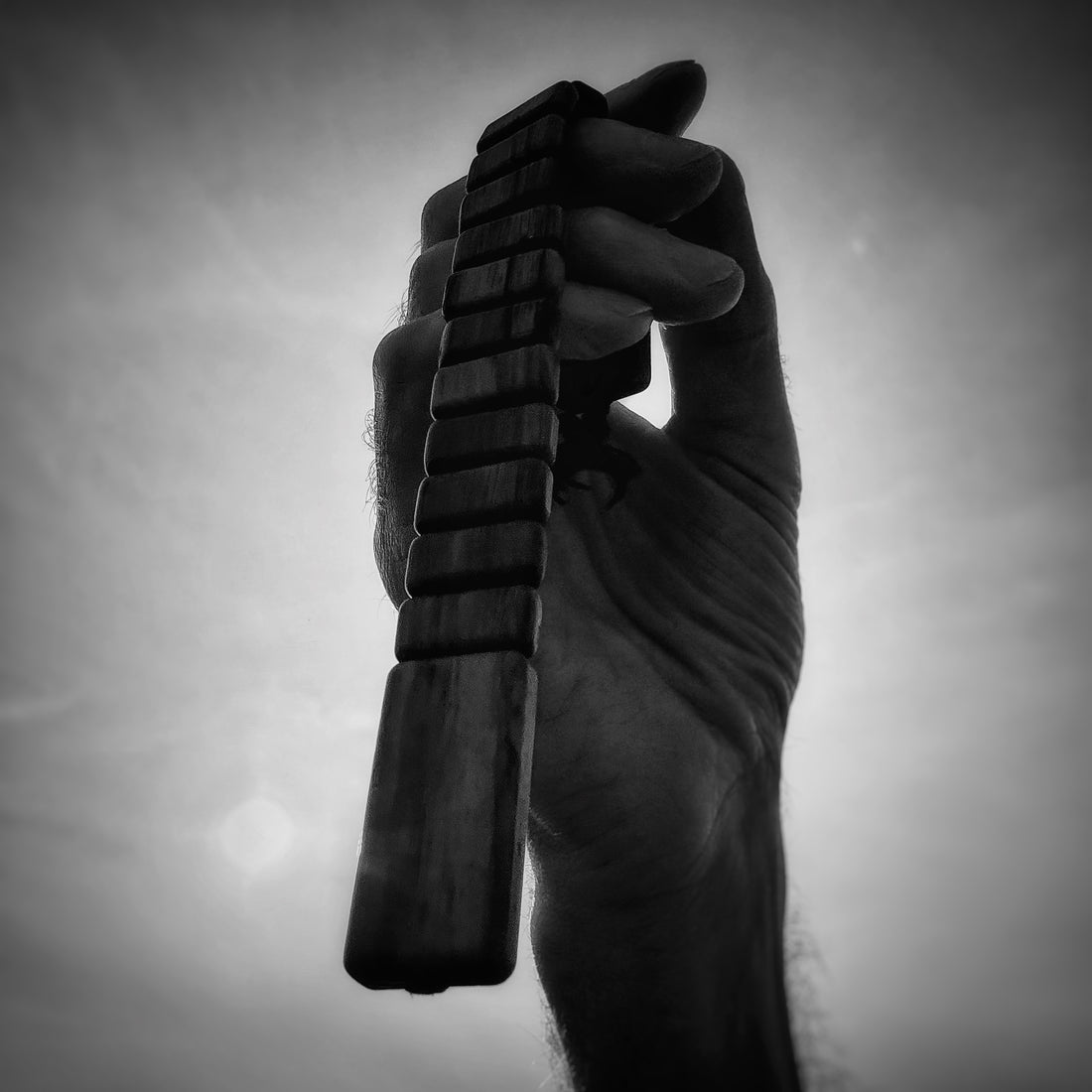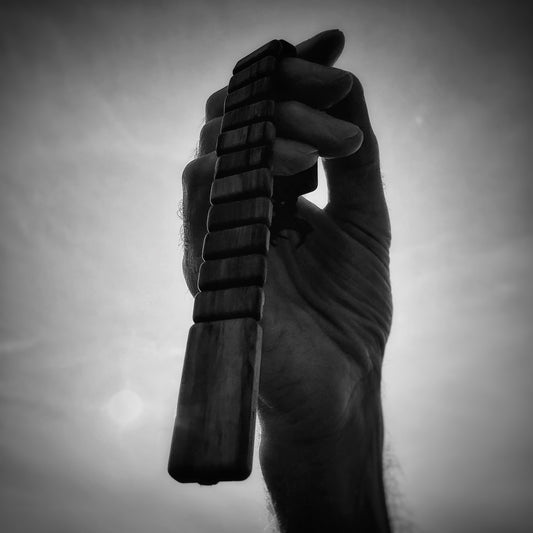
The History and Development of Perekidnye Chetki
Share
The History and Development of Perekidnye (Flipping) Chetki (Перекидные Четки)
Chetki, known formally as Eastern Orthodox prayer beads, hold a rich history in Russian culture. Traditionally, these beads were strung in loops, and were used in a religious context for reciting prayers--especially the Jesus Prayer--or simply aiding meditation. Over time, however, a distinct style of chetki emerged in Russia and Eastern Europe known as перекидные четки—or flipping chetki. This linear type of chetki marked a departure from traditional looped chetki. Flipping chetki were used for manipulation and performing tricks, sharing some similarities with Greek komboloi and modern begleri, but their origins and development are deeply tied to specific cultural and social contexts unique to Russia.
Early Origins of Chetki
The word “chetki” (чётки) in Russian is derived from the word "chet," meaning "count," emphasizing their early function as counting beads for prayer. Eastern Orthodox monks and priests were some of the earliest users of chetki, using them to assist in the rhythmic repetition of prayers. This practice is thought to have been influenced by Byzantine and early Christian traditions, which in turn were influenced by older prayer bead traditions from the East, such as the Buddhist mala or Islamic misbaha.
Initially, chetki were primarily associated with religious devotion. However, over time, their secular use grew, especially in the context of stress relief, meditation, and as an everyday accoutrement for idle hands, much like how komboloi were used in Greece. The linear style of flipping chetki likely developed in a non-religious context, and this departure from their traditional function marks the beginning of their evolution into the dynamic manipulative items we see today.
The Development of Flipping Chetki in Russian Prisons
One of the most intriguing aspects of flipping chetki (перекидные четки) is their historic association with Russian prisons and the criminal underworld. The Russian penal system, notorious for its harsh conditions, is where this type of bead flipping is believed to have evolved into a form of self-expression and identity.
During the Soviet era, Russian prisons, or Gulag labor camps, housed millions of prisoners, many of whom were political dissidents or criminals. Life in these prisons was brutal, and those inside developed unique coping mechanisms. Chetki, which were traditionally made from simple materials like wood or bone, or even hardened bread, became a common item among prisoners. In these closed environments, flipping chetki became a way for prisoners to occupy their time, relieve stress, and express their individuality within the rigid social structures of the prison.
Through the course of time, the practice of flipping chetki became linked to the criminal subculture known as blatnoy (блатной) or thieves-in-law (воры в законе), which refers to a hierarchical criminal society that developed its own code of behavior and rules within the prisons. In this context, flipping chetki was not merely a pastime but a symbol of status or defiance. The rhythmic flipping of beads became associated with the calm, composed demeanor of the higher-status criminals who used them, marking them as individuals who were in control despite the harsh conditions of prison life. Some accounts suggest that these flipping skills were even used as a way to communicate non-verbally or display dexterity and dominance.
The Mafia and Criminal Associations
Outside the prison system, flipping chetki retained its association with the criminal underworld. In the late 20th century, especially during the chaotic years following the collapse of the Soviet Union, Russia saw the rise of organized crime. The image of the mafioso calmly flipping his chetki became an iconic symbol of power, detachment, and control, and their rhythmic flipping was a subtle yet potent display of dominance and authority.
It is during this period that the public perception of flipping chetki solidified its association with mafia culture. However, as Russia modernized and the rigid stereotypes of the 1990s mafia began to fade, the connection between flipping chetki and criminal activity began to loosen. The practice of flipping beads began to shed its underground associations, and slowly became more mainstream.
Modern Usage and Cultural Shift
In recent decades, the image of flipping chetki has undergone a transformation. While it still carries some remnants of its early association with Russian prisons and organized crime, it is now viewed more as a cultural pastime or even a form of art. Similar to how begleri and komboloi have become popular among skill toy enthusiasts in Greece and elsewhere, flipping chetki has gained popularity as a skill-based activity, enjoyed for its rhythmic and meditative qualities.
Flipping chetki, like begleri, involves skill and practice to perform tricks as the beads move around the hand and fingers. For many enthusiasts, the appeal lies in the fluidity of the movement, the focus required to master the skills, and the tactile pleasure of manipulating the beads. The developing culture around flipping chetki is similar to other cultural pastimes such as begleri from Greece, kendama from Japan, and jianzi (shuttlecock) from China--each involving a deceptively simple manipulative item that ultimately becomes of tool for self-development, stress relief, and mental focus.
In Russia today, flipping chetki (перекидные четки) have transcended their criminal past and are enjoyed by a broader demographic. Modern versions are made from high-quality materials including durable plastics, exotic woods, metals, and even semi-precious stones, often crafted with an eye for aesthetics and design. These flipping beads are popular among those who appreciate their historical and cultural roots, as well as those drawn to the meditative and skill-based aspects of flipping.
The Global Influence and Future of Flipping Chetki
While flipping chetki remains most popular in Russia and Eastern Europe, the influence of this practice has started to spread globally. With the rise of the internet and social media platforms, enthusiasts from different parts of the world have begun sharing tricks, techniques, and the cultural history behind these beads. Videos demonstrating flipping skills have gained popularity, and the practice has begun to carve out its own niche in the global mindfulness and skill toy communities, much like begleri.
As the first and most prominent western company to produce and promote chetki, Aroundsquare has played a part in making these beads more accessible to a global audience, producing high-quality products, creating tutorials for beginners, sharing historical information, and promoting the culture around flipping chetki. This new global interest has helped elevate the practice, creating a new generation of enthusiasts who appreciate the skill, history, and craftsmanship involved.

